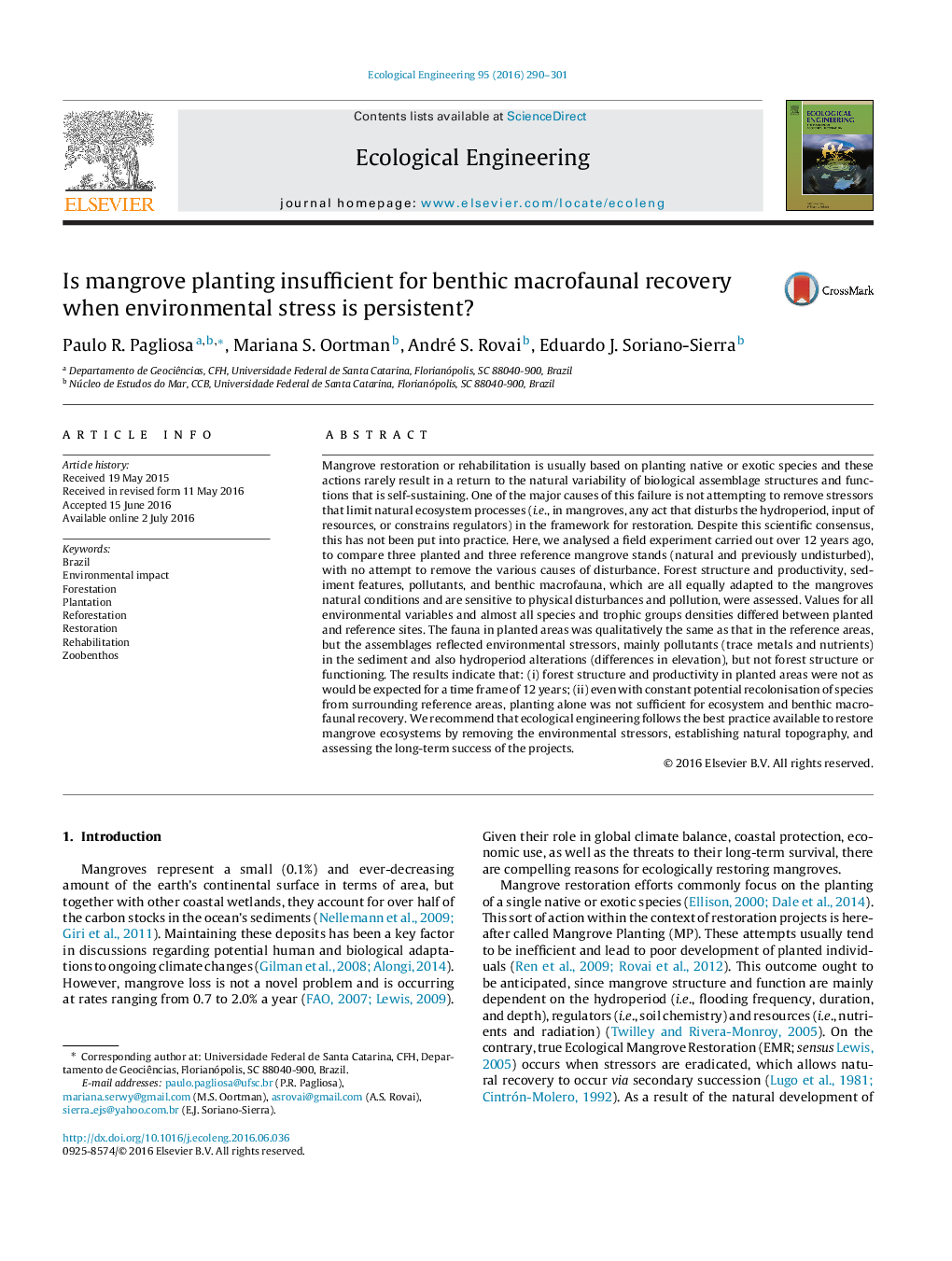| کد مقاله | کد نشریه | سال انتشار | مقاله انگلیسی | نسخه تمام متن |
|---|---|---|---|---|
| 4388454 | 1618004 | 2016 | 12 صفحه PDF | دانلود رایگان |
عنوان انگلیسی مقاله ISI
Is mangrove planting insufficient for benthic macrofaunal recovery when environmental stress is persistent?
ترجمه فارسی عنوان
آیا کاشت مانگرو برای بازیابی باکتریهای ماکرو فونال کافی نیست وقتی استرس محیطی پایدار است؟
دانلود مقاله + سفارش ترجمه
دانلود مقاله ISI انگلیسی
رایگان برای ایرانیان
کلمات کلیدی
موضوعات مرتبط
علوم زیستی و بیوفناوری
علوم کشاورزی و بیولوژیک
بوم شناسی، تکامل، رفتار و سامانه شناسی
چکیده انگلیسی
Mangrove restoration or rehabilitation is usually based on planting native or exotic species and these actions rarely result in a return to the natural variability of biological assemblage structures and functions that is self-sustaining. One of the major causes of this failure is not attempting to remove stressors that limit natural ecosystem processes (i.e., in mangroves, any act that disturbs the hydroperiod, input of resources, or constrains regulators) in the framework for restoration. Despite this scientific consensus, this has not been put into practice. Here, we analysed a field experiment carried out over 12 years ago, to compare three planted and three reference mangrove stands (natural and previously undisturbed), with no attempt to remove the various causes of disturbance. Forest structure and productivity, sediment features, pollutants, and benthic macrofauna, which are all equally adapted to the mangroves natural conditions and are sensitive to physical disturbances and pollution, were assessed. Values for all environmental variables and almost all species and trophic groups densities differed between planted and reference sites. The fauna in planted areas was qualitatively the same as that in the reference areas, but the assemblages reflected environmental stressors, mainly pollutants (trace metals and nutrients) in the sediment and also hydroperiod alterations (differences in elevation), but not forest structure or functioning. The results indicate that: (i) forest structure and productivity in planted areas were not as would be expected for a time frame of 12 years; (ii) even with constant potential recolonisation of species from surrounding reference areas, planting alone was not sufficient for ecosystem and benthic macrofaunal recovery. We recommend that ecological engineering follows the best practice available to restore mangrove ecosystems by removing the environmental stressors, establishing natural topography, and assessing the long-term success of the projects.
ناشر
Database: Elsevier - ScienceDirect (ساینس دایرکت)
Journal: Ecological Engineering - Volume 95, October 2016, Pages 290-301
Journal: Ecological Engineering - Volume 95, October 2016, Pages 290-301
نویسندگان
Paulo R. Pagliosa, Mariana S. Oortman, André S. Rovai, Eduardo J. Soriano-Sierra,
